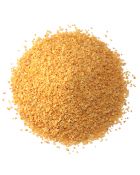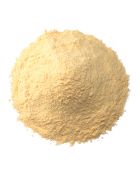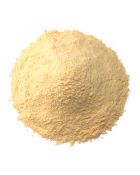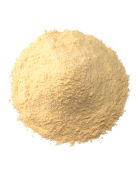Why traceable garlic matters: The difference between US and Chinese garlic supply chains
The garlic powder in your salad dressing, the granulated garlic in your spice rub, the chopped garlic in your frozen entrée… Have you ever wondered where it was grown or how it was processed?
Where does your garlic come from?
More than likely, the garlic you’re consuming is Chinese garlic. According to the United Nations Comtrade data in 2018, the United States imported around 199 million pounds of fresh and 155 million pounds of dried garlic. The overwhelming majority of it was sourced from China, but it hasn’t always been that way.
For decades, the garlic consumed in America was largely grown and processed in the United States until the American market became flooded with Chinese imports — driven primarily by lower prices and limited public knowledge about Chinese garlic growing and processing operations.
Over the past two decades, Chinese garlic has taken a foothold in the US supply chain. Why is this alarming? Let’s explore.
Chinese garlic supply chains
China produces around 10 billion pounds of garlic a year. It is grown by nearly 1.2 million farmers, across five major growing regions, whose crops are usually cultivated on less than two acres of land -- often alongside, or in conjunction with peanuts, which can raise potential allergen risks. These operations are run similar to a home garden, where they use generic seed and the application of fertilizers and pesticides do not have to be documented and are not regulated.
After harvest, the garlic is sorted into three categories: the visually pleasing garlic, which is about 60%, gets sent to the fresh market, 20% is reserved for seed to be planted next year and the rest is sent to be flaked/processed into dehydrated garlic products.
The garlic that has been graded for dehydrated products is purchased by a collector who sells it to a larger wholesaler. From there, the garlic is placed on the floor of an open-air, wholesale garlic market, where it is auctioned off and taken to a facility to be flaked and processed.


That’s at least five different hands the garlic has passed through before it has even been packed. This complex supply chain is why it’s often impossible to get traceability from farm-to-shelf in China.
US garlic supply chains
At the moment, food safety is at the top of everyone’s minds and rightly so. You shouldn’t have to wonder how many hands or facilities your food has passed through, what safety precautions the laborers used to produce it, where it was grown or if you’re putting your consumers at risk by using it.
At Spices by ofi, our California garlic is grown specifically for the dried garlic market. We have direct ownership of the entire supply chain, from seed to processed ingredient, which allows us to provide our customers with flavorful and fully traceable garlic with unparalleled food safety standards.
Our garlic starts as cloves at our research and development facility in Hanford, California, where it goes through our proprietary virus-free garlic program. From there, it is planted and harvested by our agricultural operations team and cultivated in partnership with local farmers.
The entire process happens in California, where farmers are held to the highest standards and face the most stringent regulations — creating the safest and most sustainable garlic in the world.
At our plant in Gilroy, California, where the garlic is washed and milled, our experts ensure quality checks throughout the entire process. Then it’s packaged and prepped to be shipped to our customers, worldwide.


Why traceability matters
Giving consumers the ability to trace their products’ entire journey is an excellent way to track food safety standards. It also holds organizations accountable, as consumers can also find out if companies have sustainability issues in their supply chain, if they’re using low-quality ingredients or have unsafe labor practices.
Our California garlic is now available through AtSource, ofi’s comprehensive, sustainable sourcing solution. Using AtSource, we are able to measure social impact and connect our customers to the source of their garlic supply.




